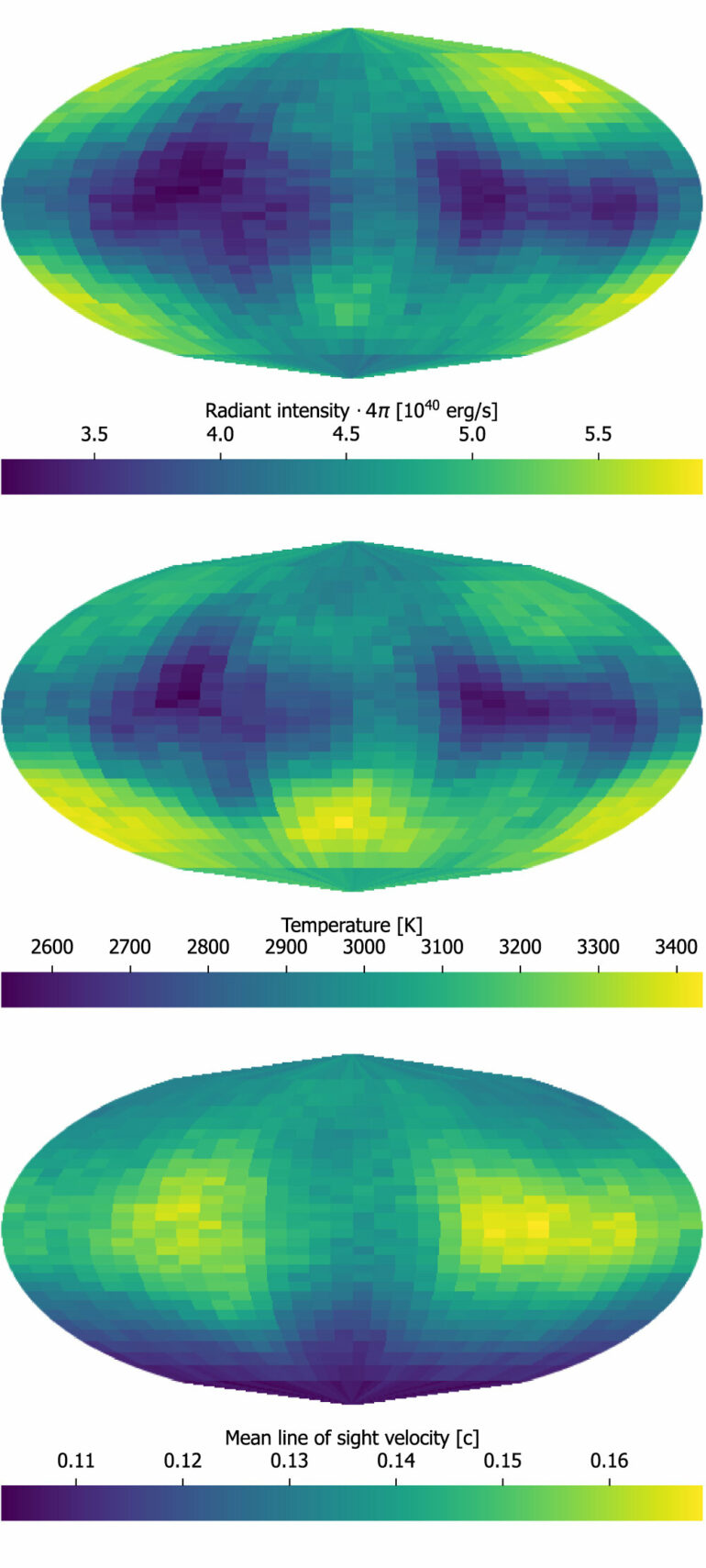An advanced new three-dimensional (3D) computer simulation of the light emitted following a merger of two neutron stars has produced a similar sequence of spectroscopic features to an observed kilonova.
“The unprecedented agreement between our simulations and the observation of kilonova AT2017gfo indicates that we understand broadly what has taken place in the explosion and aftermath,” says Luke Shingles, scientist at GSI/FAIR and the leading author of the publication in The Astrophysical Journal Letters.
Recent observations that combine both gravitational waves and visible light have pointed to neutron star mergers as the major site of this element production. The research was performed by scientists at GSI Helmholtzzentrum für Schwerionenforschung and Queen’s University Belfast.
The interactions between electrons, ions, and photons within the material ejected from a neutron-star merger determine the light that we can see through telescopes. These processes and the emitted light can be modeled with computer simulations of radiative transfer.
Researchers have recently produced, for the first time, a 3D simulation that self-consistently follows the neutron-star merger, neutron-capture nucleosynthesis, energy deposited by radioactive decay, and radiative transfer with tens of millions of atomic transitions of heavy elements.
Being a 3D model, the observed light can be predicted for any viewing direction. When viewed nearly perpendicular to the orbital plane of the two neutron stars (as observational evidence indicates for the kilonova AT2017gfo) the model predicts a sequence of spectral distributions that look remarkably similar to what has been observed for AT2017gfo.
“Research in this area will help us to understand the origins of elements heavier than iron (such as platinum and gold) that were mainly produced by the rapid neutron capture process in neutron star mergers,” says Shingles.
About half of the elements heavier than iron are produced in an environment of extreme temperatures and neutron densities, as achieved when two neutron stars merge with each other. When they eventually spiral in toward each other and coalesce, the resulting explosion leads to the ejection of matter with the appropriate conditions to produce unstable neutron-rich heavy nuclei by a sequence of neutron captures and beta-decays. These nuclei decay to stability, liberating energy that powers an explosive “kilonova” transient, a bright emission of light that rapidly fades in about a week.
The 3D simulation combines together several areas of physics, including the behavior of matter at high densities, the properties of unstable heavy nuclei, and atom-light interactions of heavy elements. Further challenges remain, such as accounting for the rate at which the spectral distribution changes, and the description of material ejected at late times.
Future progress in this area will increase the precision with which we can predict and understand features in the spectra and will further our understanding of the conditions in which heavy elements were synthesized. A fundamental ingredient for these models is high quality atomic and nuclear experimental data as will be provided by the FAIR facility.
More information:
Luke J. Shingles et al, Self-consistent 3D Radiative Transfer for Kilonovae: Directional Spectra from Merger Simulations, The Astrophysical Journal Letters (2023). DOI: 10.3847/2041-8213/acf29a
Provided by
Helmholtz Association of German Research Centres
Citation:
Simulating the three-dimensional morphology of kilonovae (2023, October 18)



